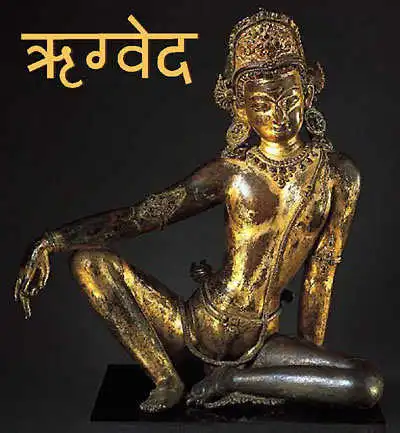
The Creation in Rig Veda 10:129A. A. Macdonell's Translation
A. A. Macdonell's Version of Rig Veda 10:129A. A. Macdonell was an India born Professor in Sanskrit, getting his education and professional career in Germany and Great Britain. His version of Rig Veda 10:129 is from the book Hymns from the Rigveda, printed in India, 1922.
Arthur Anthony Macdonell (1854-1930) was appointed Boden Professor of Sanskrit in 1899, a position first held by H. H. Wilson, whose version of Rig Veda 10:129 is also presented on this website. Among other works, Macdonell wrote a grammar of Sanskrit and several books on the Vedic scriptures. Macdonell's version of Rig Veda 10:129 below is from the book Hymns from the Rigveda, printed in India, 1922, as part of The Heritage of India Series. Unfortunately Macdonell doesn't comment on the hymn, except for two short sentences in the introductory text preceding his translation of the hymn. He stresses that Rig Veda 10:129 is "particularly interesting as the starting point of the evolutionary philosophy represented in later times by the Sankhya system." (p. 16) Sankhya, or Samkhya, is an old school of Hindu philosophy, developed during the first centuries CE. That's a thousand years later than the Rig Veda 10:129 hymn is presumed to have been composed, so the link is a vague one at best. Macdonell also stresses the literary quality of the hymn, illustrating "how philosophical speculation can be clothed in poetry of no mean order." (p. 18). I have seen no opposition to this praise elsewhere. Here is his English version of the hymn:
Rig Veda, Mandala 10, hymn CXXIX. Creation.Nasadiya Sukta ("Not the non-existent")
2. Death then existed not nor life immortal;
3. Darkness there was at first by darkness hidden;
4. Desire entered the One in the beginning:
5. Their ray extended light across the darkness:
6. Who knows for certain? Who shall here declare it?
7. None knoweth whence creation has arisen;
New ClarityIt may be an illusion created by this translation being several decades younger than the ones presented above, but A. A. Macdonell's version from 1922 stands out with its clarity and straightforwardness.Already in the first line, he introduces being and non-being, where both H. H. Wilson and R. T. H. Griffith have somewhat elaborate solutions with existent and non-existent. Perhaps a slight Shakespearean influence has touched Macdonell in this choice. In the following, he uses concealed instead of covered and protection instead of shelter. That adds precision to the statements of the hymn, eliminating some alternate interpretations of these lines.
The One that Has to BeAs for the One, Macdonell writes that it breathed windless by its inherent force. That's an interesting solution. This primordial deity did breathe, that is to say it was alive, but it needed no air. Its inherent force is an expression coming close to Griffith's "by its own nature."Both imply an existence out of some inner necessity. It is there because something like it has to be. There has to be One to begin with, since there would be no beginning with none. In ancient thought the whole world over, agents of creation had to have the will by which to make it happen, which also means they had to be creatures able to will. Not just things or impersonal natural laws.
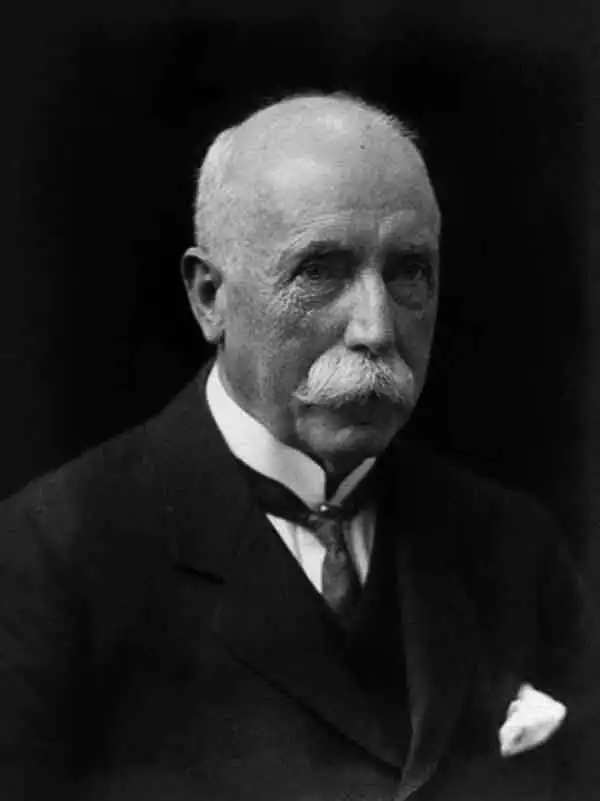 Arthur Anthony Macdonell. So, at the dawn of time there had to be somebody initiating the creation process. The mystery is what reason this original One might have had for it, and what power that primordial being had at its command. Here it's indicated that this power of being and doing is out of logical necessity. If there had been no such One in the beginning, there would have been no creation. Since there was a One, creation had to take place, eventually.
Darkness Hidden by DarknessThe darkness hidden by darkness is a paradox pointed out also in the previous translations, although with slightly different wordings. It's a powerful description of a primordial chaotic state.Also, it's plain logic: without any light anywhere, how to perceive the lack of it, or the darkness as such? Only when things are divided into opposites are their traits recognizable. This original state is described as water, the primordial sea found in so many creation myths. In Macdonell's wording of Rig Veda 10:129, the universe before creation is one where everything is floating, without border, without anything by which to tell it apart from anything else. A melting pot of everything yet to emerge.
Springing into ActionThe concept of a melting pot is almost suggested by the heat that makes the One come into being. In previous translations of Rig Veda 10:129, it's not as clear as in Macdonell's wording that the One is created out of this chaos. Their versions make it possible that the One existed already in the primordial chaotic state, although passive. That's really also how one must read the previous verse in Macdonell's translation.He may have jumped to conclusions here. The One must have existed in some way before the creation commenced, or he would not have been able to administer it. He would just be part of it.
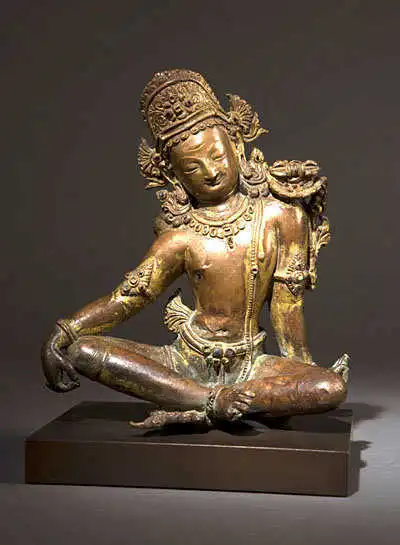 Indra. Gilt copper sculpture from Nepal, c. 14th century. Instead, what the heat accomplishes is that the One springs into action. Almost like an explosion. As the temperature rose, for no other reason than the potential of the initial state, things started to happen and the void of the primordial sea was divided into distinguishable parts. What drives the One to begin and pursue the act of creation is desire, an emotion signified by heat. Heat is to inanimate nature what desire is to a conscious creature. In other words: what begins as desire is expressed by heat. This desire is one to create. It's the fuel of will-power, a wish to make something happen, which has to forego the actual making. This is also what the previous versions of Rig Veda 10:129 suggest, maybe with more distinction than that of Macdonell. It's also what the sages realized: non-being contains the seed of being, the former leading to the latter as soon as there is intention.
Their RayNext comes a ray that somehow divides the world into the above and the below. Macdonell speaks of it as "their ray" and so does Wilson. Griffith calls it "their severing line." Of the translators previously presented, only Max Müller chooses an impersonal origin: "this spark."To whom the ray belongs according to the other translators is unclear. Are the owners or originators of the ray, with Macdonell's words, being and non-being, or the sages, or the seed of desire and the One in which that seed appeared? The only thing that makes some kind of sense is that the ray is produced by the relation between being and non-being. If so, it can be called a spark of potential: it appears because being must emerge out of non-being.
Creation Out of NecessityThat fits with the general idea of the hymn, focusing on the paradox of creation. Rig Veda 10:129 seems to repeatedly state that creation was unavoidable, a natural necessity, simply because there could be no non-being without its opposite, being. Plato and Aristotle would have enjoyed discussing it with the poet of this hymn.In Macdonell's version, this ray becomes the divider of the world into high and low, but then he asks on what side the One might be. None of the other translators ask the same question, but seem to take for granted that the One is above – or perhaps beyond. It's hard to see how the One, initiating the process of creation, can become a victim of it. So, Macdonell might be mistaken here, although he is clear about the rest of the division, putting the creative force above and its manifestation below. As for the rest of the hymn, Macdonell's version doesn't contradict the others.
About A. L. Basham's Translation of Rig Veda 10:129The Creation in Rig Veda 10:129The Paradox of Origin
MENUCreation Myths Around the WorldHow stories of the beginning began.
The Meanings of MythologyTheories through history about myth and fable.
Archetypes in MythsThe mythological symbols and what they stand for.
The Logics of MythPatterns of creation.
CREATION MYTHS IN DEPTHCreation in Rig Veda 10:129The paradox of origin, according to an Indian myth.
Genesis 1The first creation story of the bible scrutinized.
Enuma ElishThe ancient Babylonian creation myth.
Xingu Creation of ManThe insoluble solitude of gods and humans.
ContactAbout Cookies
ON MY OTHER WEBSITESPsychoanalysis of MythWhat Sigmund Freud and C. G. Jung thought about myths, their origins and meanings.
Myth of CreationAn introduction to the subject of creation myths and the patterns of thought they reveal.
Cosmos of the AncientsWhat the Greek philosophers believed about the cosmos, their religion and their gods.
Life EnergyThe many ancient and modern life force beliefs all over the world explained and compared.
TaoisticTaoism, the ancient Chinese philosophy of life explained. Also, the complete classic text Tao Te Ching online.
|
 Archetypes of Mythology
Archetypes of Mythology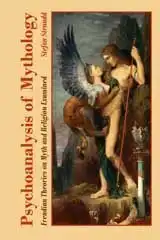 Psychoanalysis of Mythology
Psychoanalysis of Mythology Cosmos of the Ancients
Cosmos of the Ancients Life Energy Encyclopedia
Life Energy Encyclopedia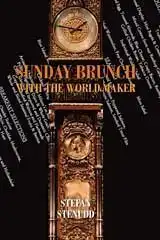 Sunday Brunch with the World Maker
Sunday Brunch with the World Maker Fake Lao Tzu Quotes
Fake Lao Tzu Quotes Stefan Stenudd
Stefan Stenudd